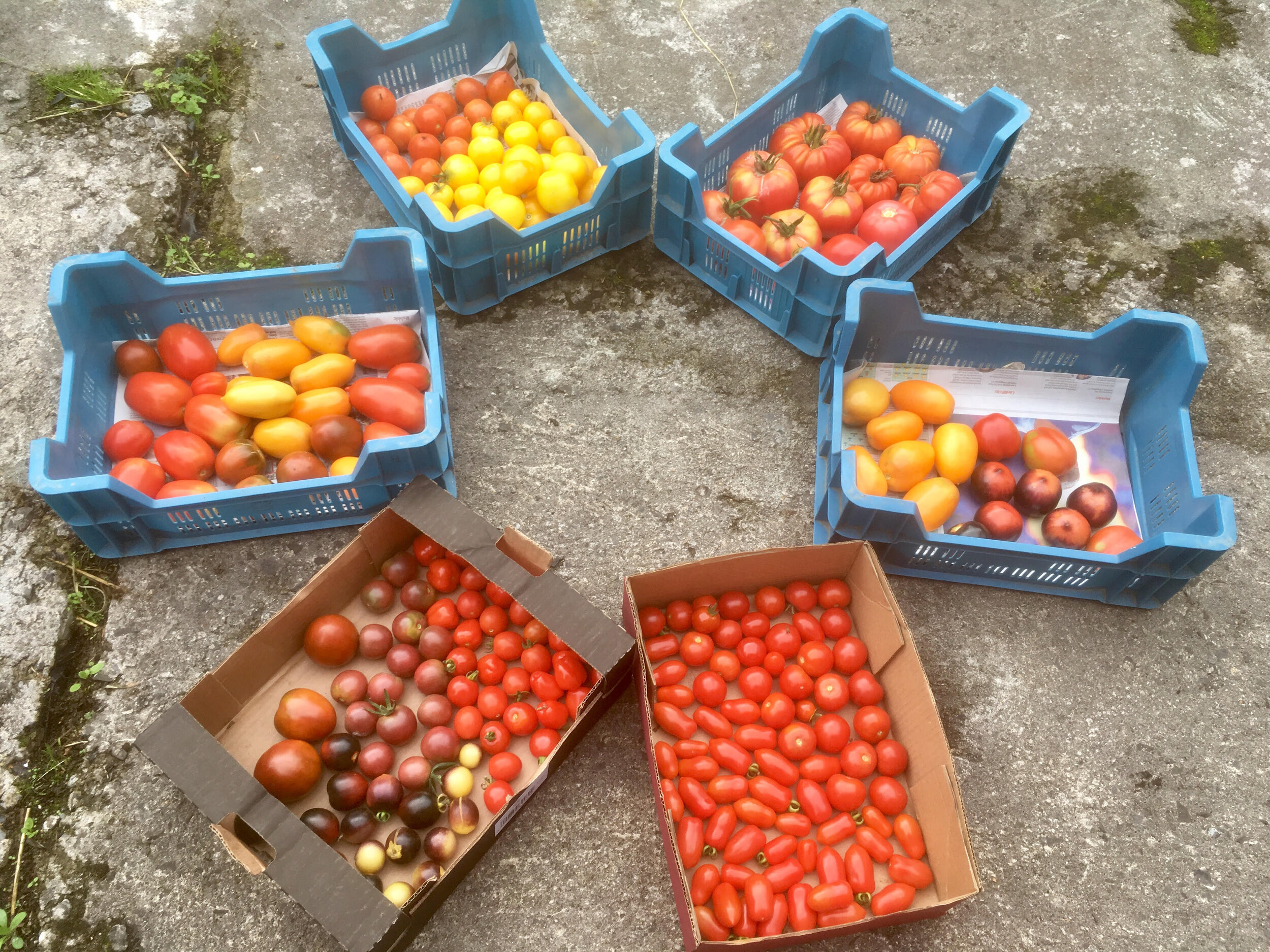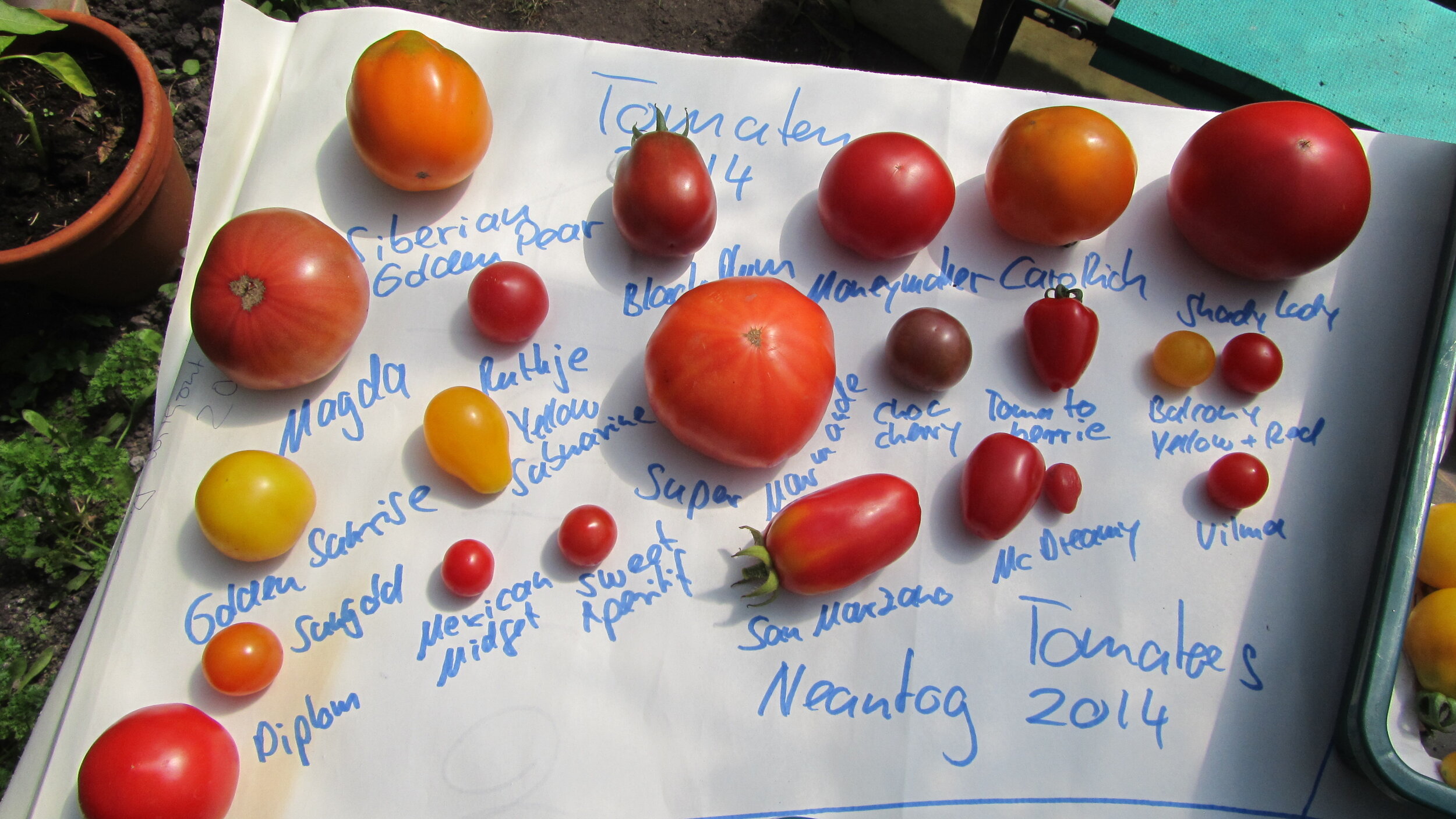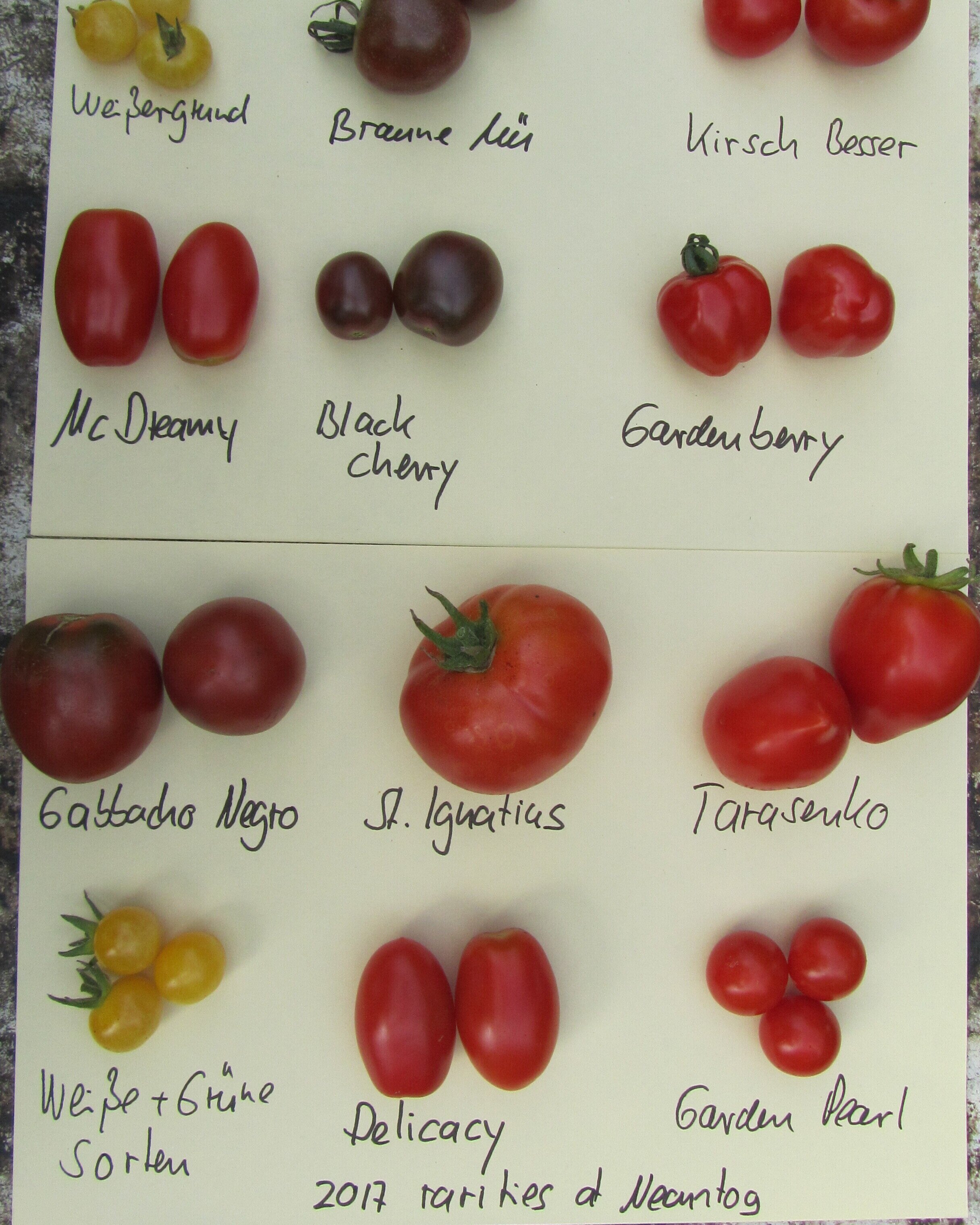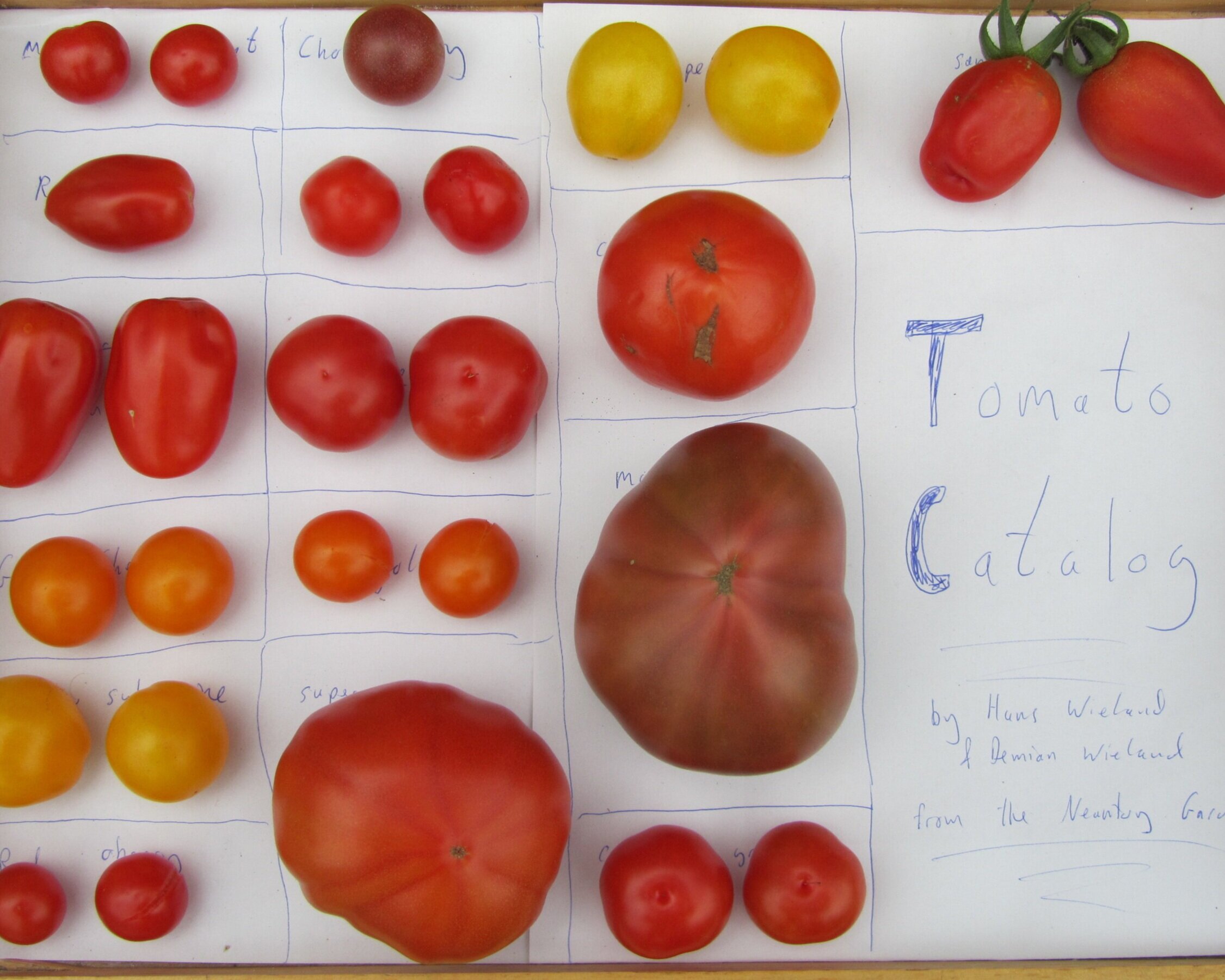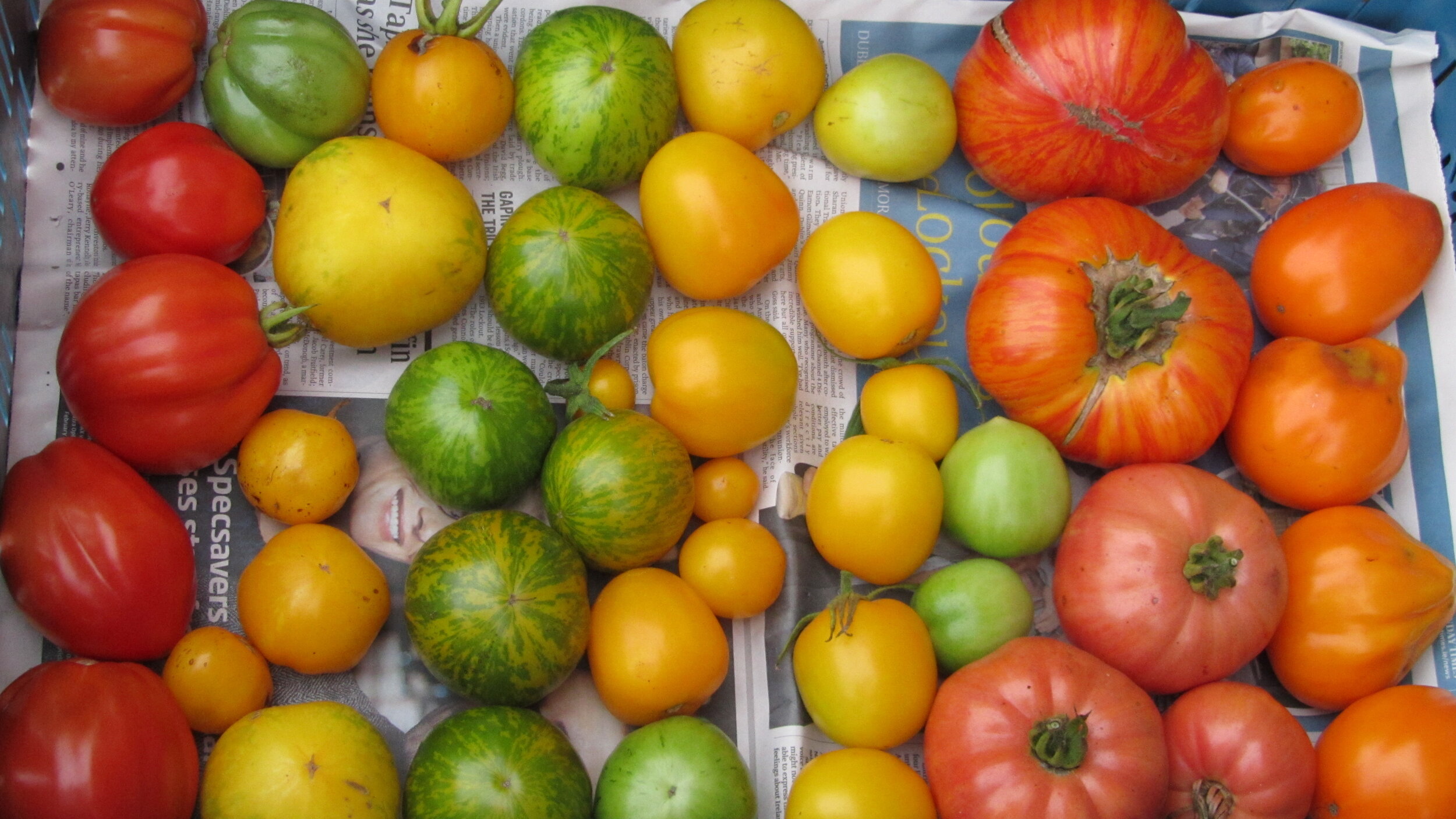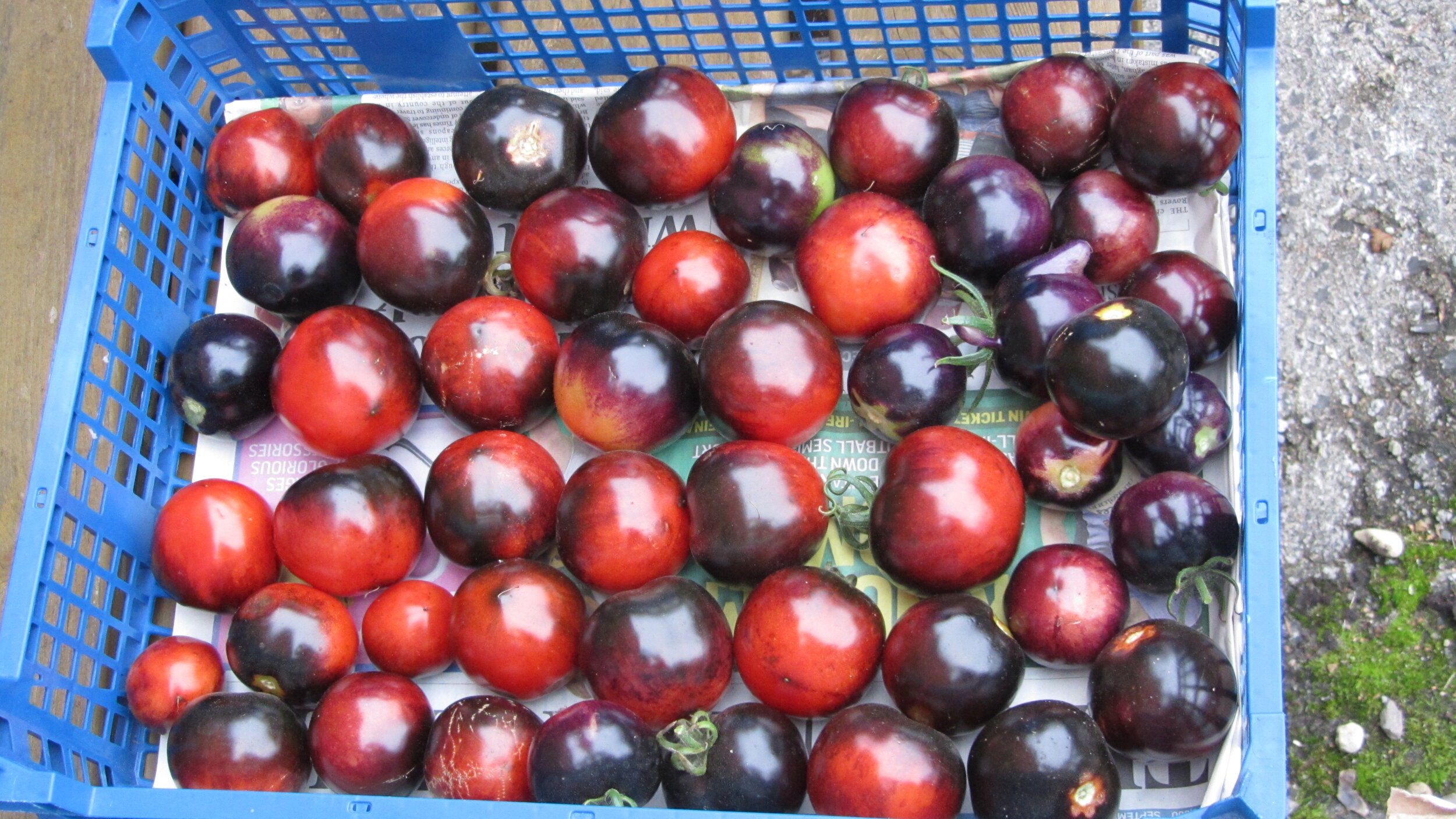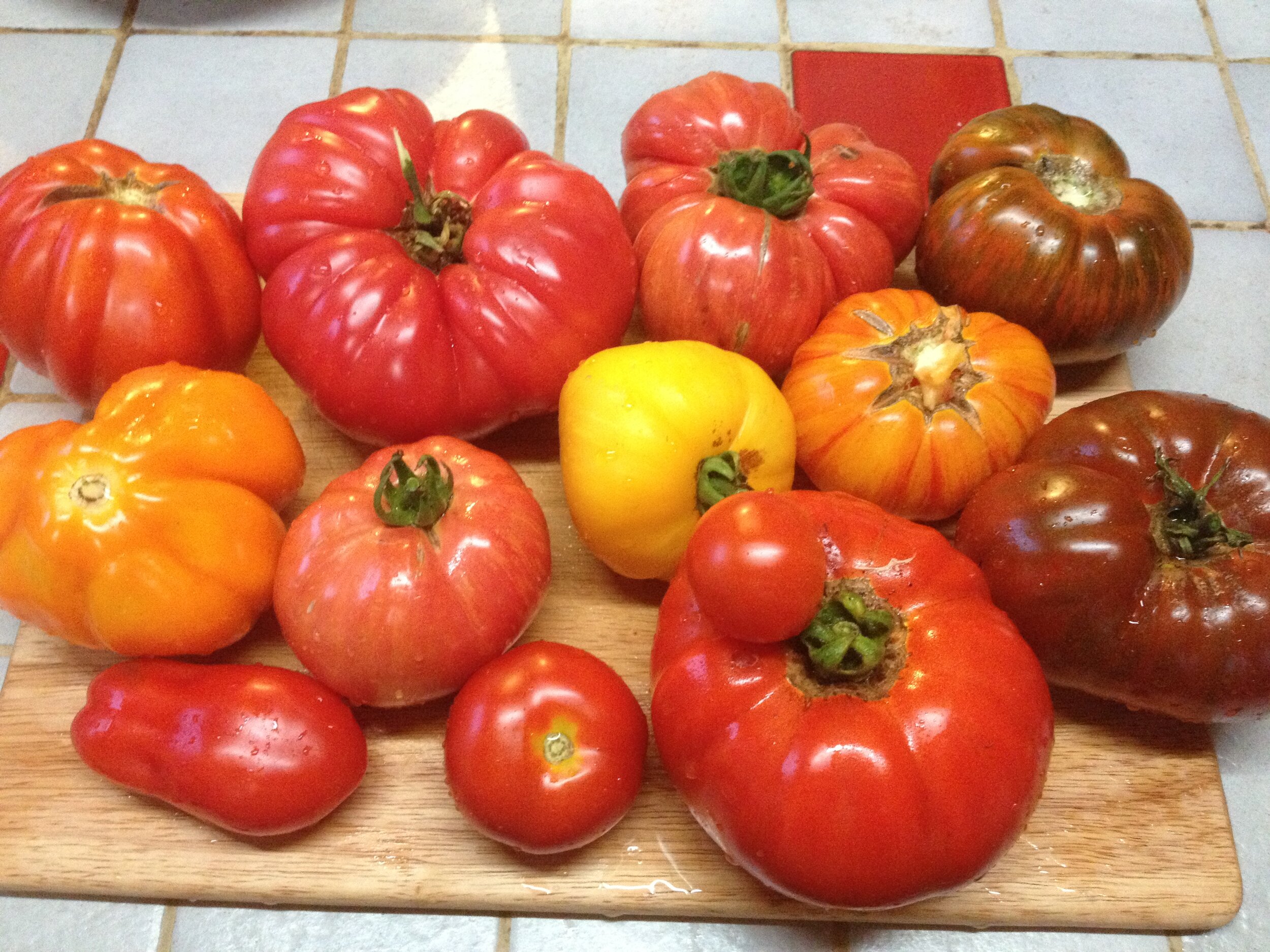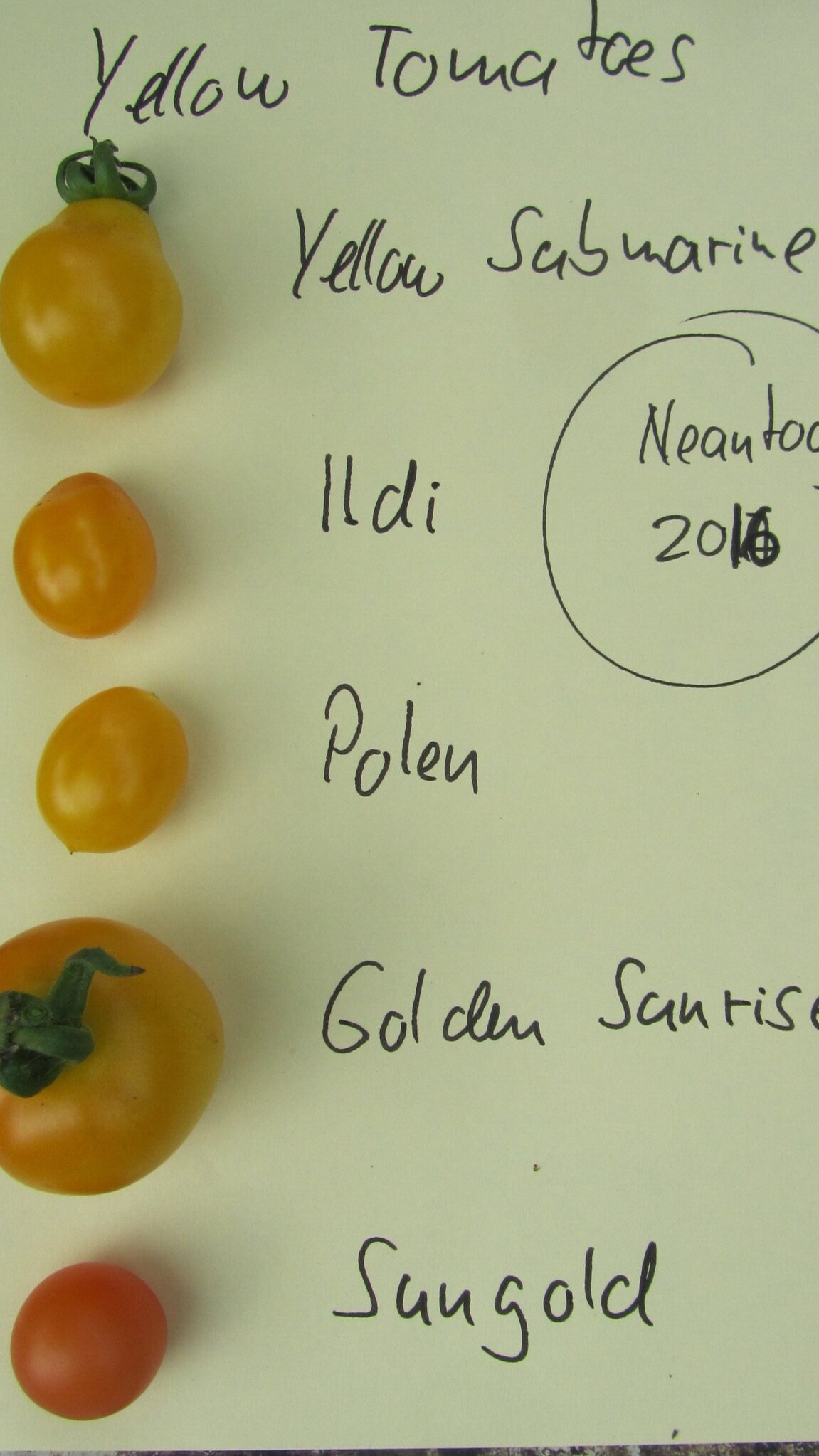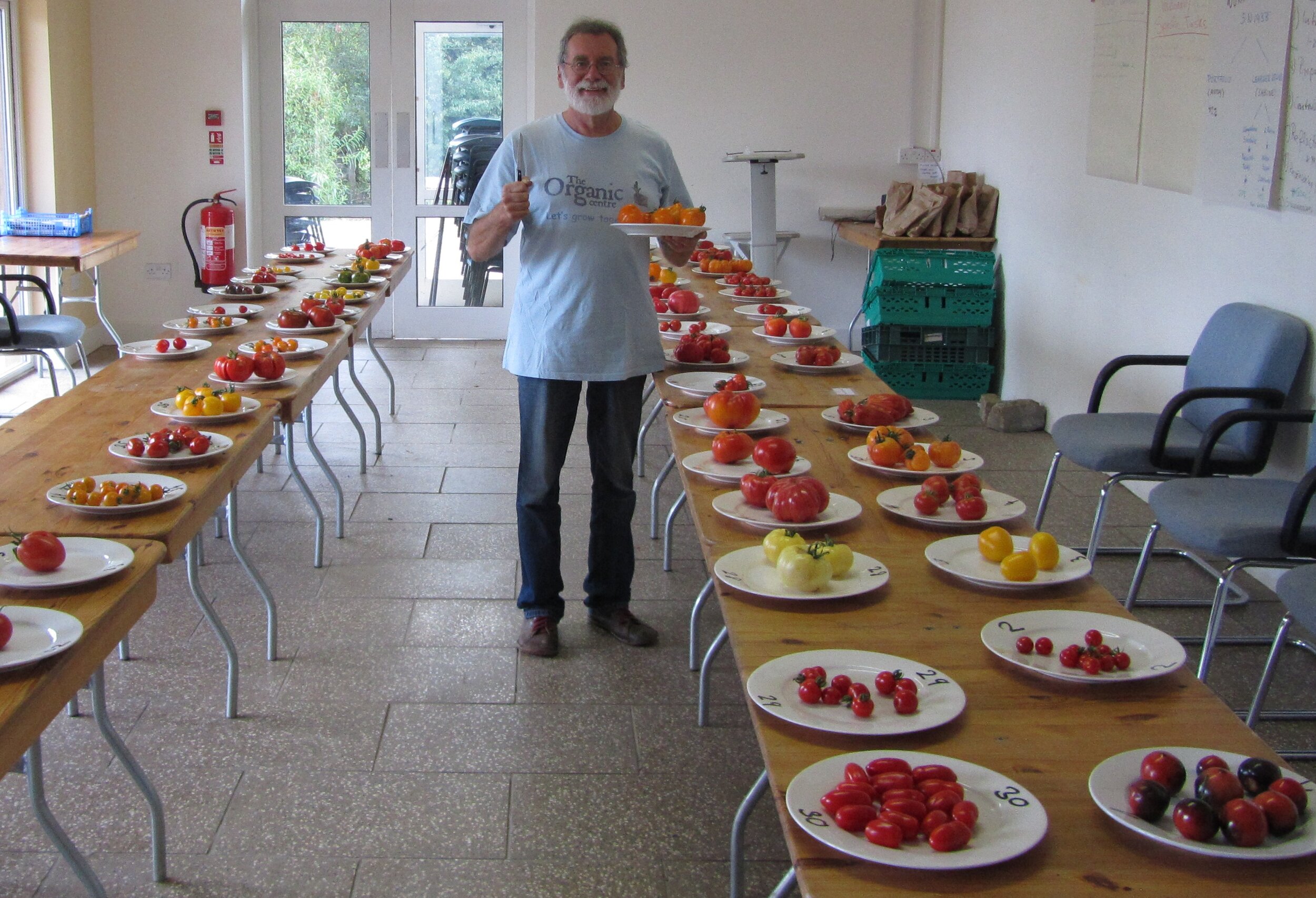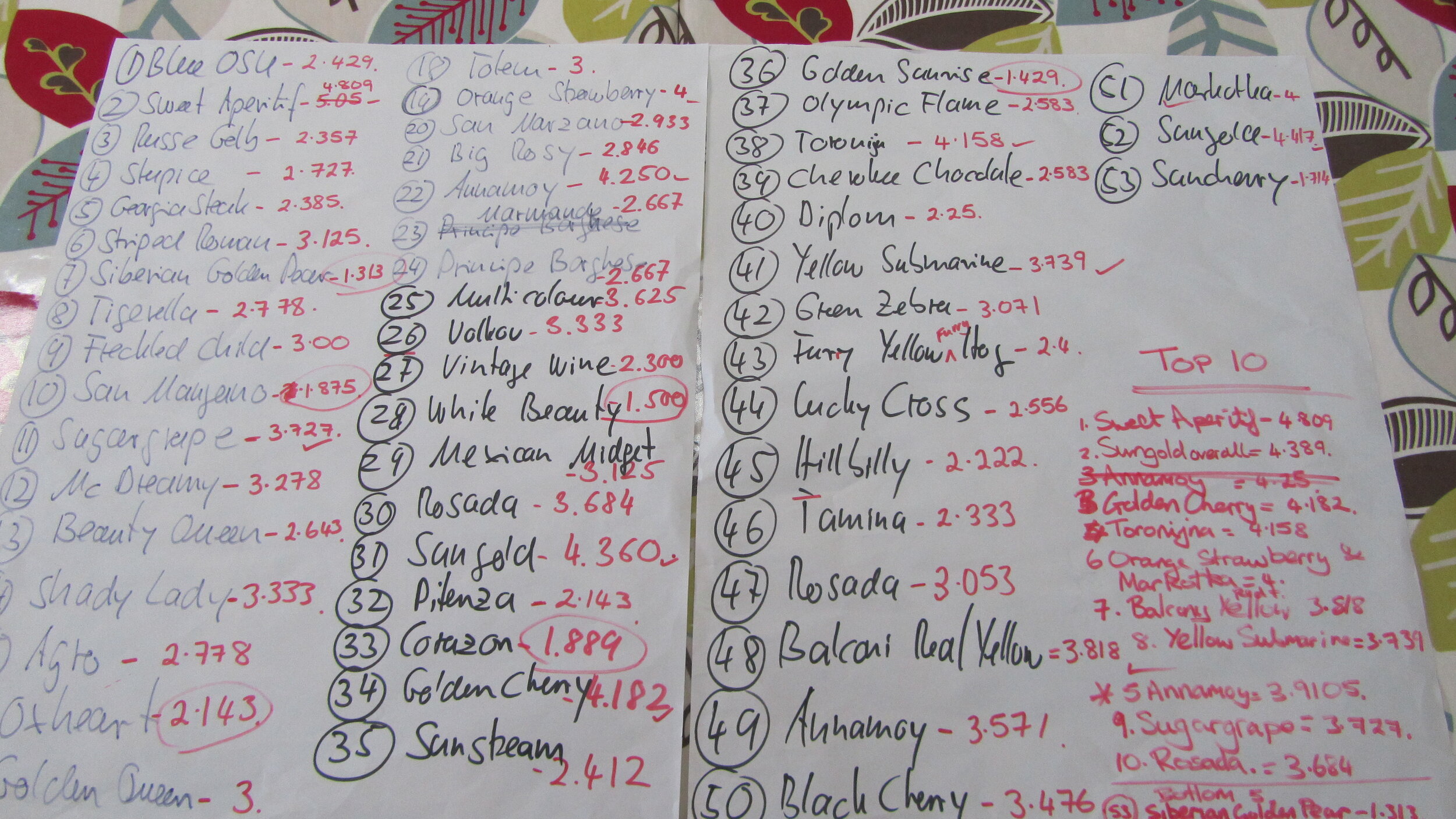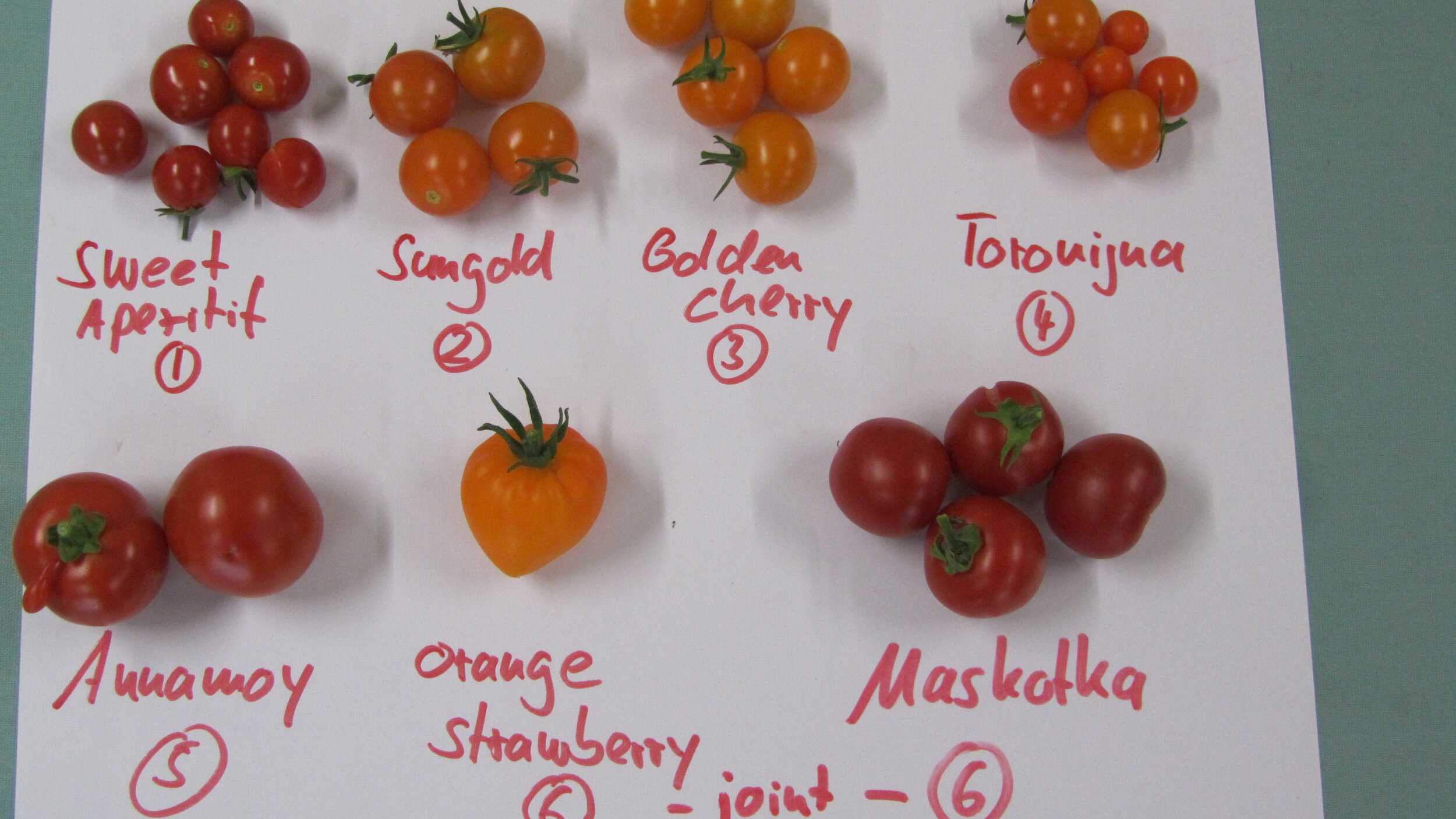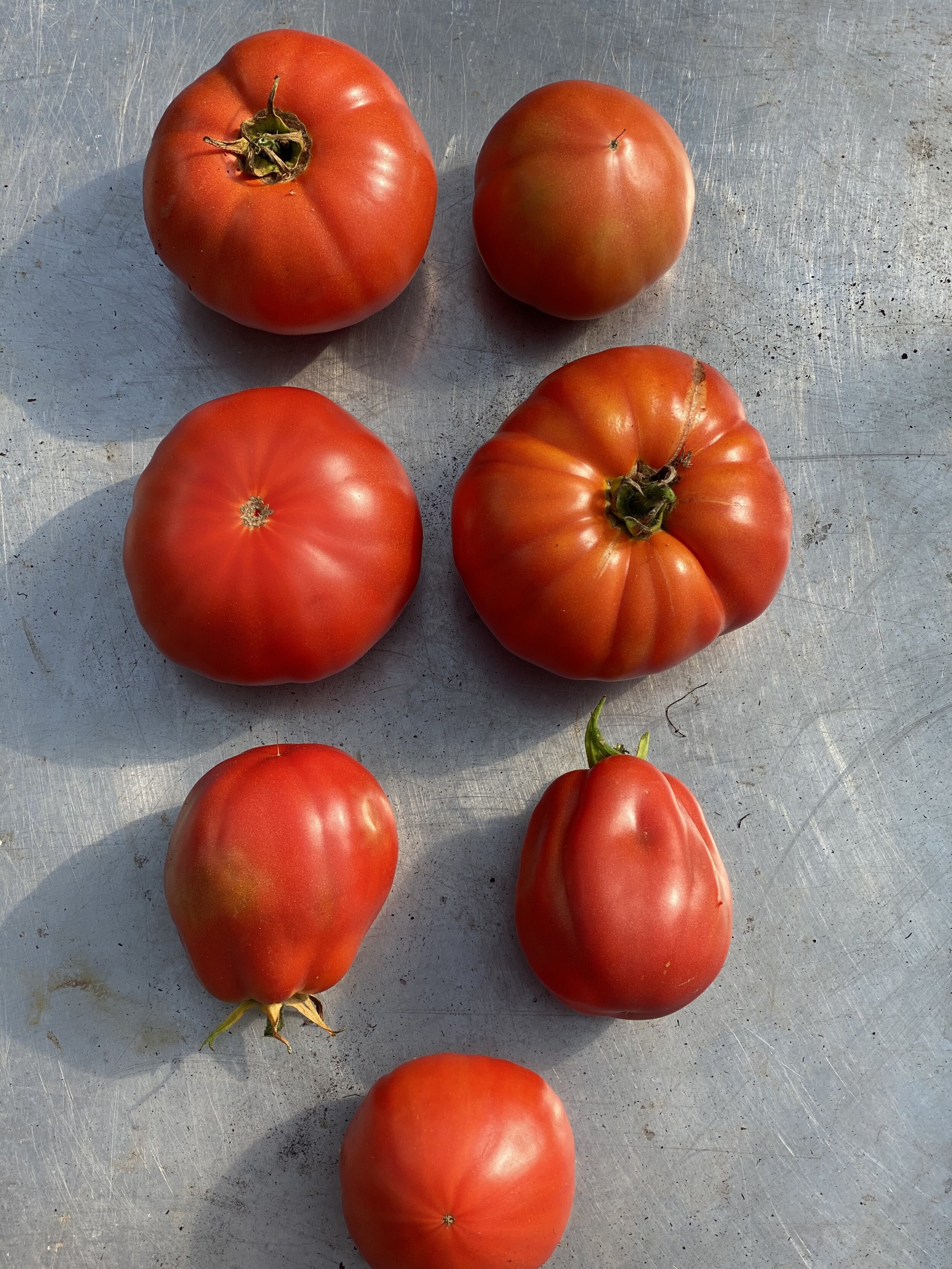A lifetime growing and eating tomatoes
…a selection of cherry tomatoes
The world of tomatoes
Tomatoes are one of the most loved vegetables around the world, with China the leading producer (50 million tons), Italy and Spain come 8th jointly (6 million tons) and Ireland is ranked 140th (4000 tons). Source: wikipedia 2017
If we accept that there are around 7500 varieties of tomatoes according to Wikipedia and that Gerhard Bohl, a German collector grew 3000 varieties then the 30 plus varieties we grow in any normal year in our polytunnel are actually ‘peanuts’, if you allow me that comparison. I remember the year 2001 when my former colleague Klaus Laitenberger tried around 100 varieties in The Organic Centre and “discovered” Sungold F1, which subsequently won any competition as the sweetest tomato until 2013, when I organised a trial of 60 varieties at The Organic Centre and Sweet Aperitif was the outright winner with chefs Neven Maguire, Brid Torrades and Piero Melis amongst the judges.
…and Ireland
But back to basics first and the reality that growing tomatoes in Ireland has only really be made possible for the wider public with the arrival of polytunnels merely 30 years ago. So in comparison to the growers in southern Mexico, who cultivated tomatoes 500BC or the farmers of the Lower Andes, who have grown them since1500, or the people of Italy, where the tomato arrived in 1522, we are really “green behind our ears” when it comes to tomatoes.
Since 1985 we have always grown tomatoes in polytunnels and the taste of a freshly picked tomato eaten at “polytunnel-temperature” is unbeatable. And we can definitely claim to be self-sufficient when it comes to tomatoes: fresh, sun-dried, ketchup, sauce, soup, passata. In an average year we grow up to 50 or 60 plants and up to 30 varieties!
Bush or vine tomatoes?
One of the classifications for tomatoes are determinate or indeterminate, referring to the growing habit of tomato plants, the former are bush tomatoes best grown in big pots with no or little need of support, the latter are vine tomatoes, where each plant is supported by bamboo poles or twine. During planting, one end of the twine is buried in the soil beneath the roots of the tomato plant. or else looped around the stem above ground. The other end is tied taut to an overhead wire or string running the length of the polytunnel. As the plant grows the stem is wound around the twine. In this way the plants are held upright, grow tall and crop heavily.
We feel bush tomatoes are highly underrated, as they can produce fruit very early and can be grown in big pots or confined spaces. We grow up to 8 plants in our big conservatory, favourite varieties are Balconi, red and yellow, Cherry Falls and Tumbling Tom.
How to grow
Usually seeds are sown in March either in pots or if you have many varieties in modular trays. Fill each tray with seed compost, water well, then place one seed in each module and cover over with a sprinkling of compost. Ideally place the trays on a heating mat giving 20-22C for perfect germination. When the tomato seedlings have three leaves transplant them, using potting compost, into individual 8cm (3 inch) pots. Keep the soil moist as the plants grow. When the seedlings are about 20 cm (8 in) tall pot them on again into larger pots. For tall varieties use large, deep pots and stick a 1.5m (5ft) cane into each pot to support the plant as it grows. We recommend to think backwards from the time you can plant them in situ in the polytunnel: E.g. if you plant them out last week in April or first week in May (when the chance of ground frost is gone) then you need to sow latest by the middle of March as it takes usually about 6 weeks from seed to mature seedling. Important tip: You can pot and plant tomatoes deep, up to the germination leaves or cotyledons, thus encouraging more roots to grow.
From now on it’s watering, feeding and side shooting, removing the shoots that develop between the stem and main branches to maintain the plant’s shape and productivity.
When flowers have appeared feed tomato plants once a week with a mixture of comfrey, nettle and liquid seaweed to encourage fruiting. Correct watering is crucial and we water plants heavily to the roots, not the leaves, three times a week early in the morning with initially 10 liters a week up to 40 liters in August.
Which varieties to choose?
This is where it becomes really exciting, as sowing from seed gives you unlimited options! GIY recommends Tigerella, Rosada, Sungold F1 and Shirley F1, in addition Irish Times garden writer Fionnuala Fallon likes Maskotka, Brandywine, Pantano Romanescu and Caro Rich, tomato afficionado Nicky Kyle’s 6 best varieties are: Maskotka, Blush, Sungold F1, John Baer, Moonglow and Pantano Romanescu, Klaus Laitenberger’s favourites are Sungold F1, Rosada F1, Indigo Rose, Green Zebra and Annamay F1.
The top ten 2013 at The Organic Centre: Sweet Aperitif, Sungold, Golden Cherry, Torojina, Annamoy, Maskotka and Orange Strawberry, Balcony Red and Yellow, Yellow Submarine, Sugargrape and Rosada.
In our experience reliable varieties, especially for beginner growers are Gardeners Delight, Sungold F1, Yellow Submarine and Matina. The last few years our favourites at Neantog are: Tomatoberry, Arielle, Magda, Santiono, Blush, Sungold and the bush varieties Cherry Falls and Balconi.
In 2023 we trialled 22 varieties and Arielle is our new favourite. It has a thick skin, but they taste utterly delicious. The top five were Arielle, Santiono, Gardenberry, Rosella and Sungold.
Size is not all that matters, colour does too!
We can classify varieties of tomatoes according to size and shape from round to cherry, plum to beefsteak, but we focus on colour too, which originally was yellow to orange, then was bred mainly for red, later for yellow again and now for blue. The difference in color is not just superficial. The carotene lycopene is responsible for the red and pink colour of our classic or standard tomato.
Then there are the yellow tomatoes with a slightly different nutritional profile from that of red ones. They have lots of niacin and folate like red ones, but less vitamin C and less lycopene. Perhaps most importantly, they are lower in acid than red tomatoes. For people who love tomatoes, but suffer when they eat acidic foods, yellow tomatoes can be a good middle ground for salads, pizzas, sauces, and any other dishes where tomatoes may appear. The lower acid level also allows some of the more naturally sweet flavor of the tomato to come through, which can be an advantage in some dishes. We especially like Yellow Zebra.
So what’s with the blue tomatoes?
Researchers at Oregon State University (OSU), using conventional breeding techniques, have crossed domestic tomatoes with wild varieties to produce blue tomatoes that have high levels of anthocyanin, a compound that also appears in blueberries and that produce the healthy pigments in red wine. Anthocyanin, not present in red tomatoes, possesses antioxidant properties to make it a healthier tomato.
Blue OSU is the variety we have trialled and the colour ranges from a purplish blue to a dark, almost black colour, but beware anthocyanin is only produced in the fruit in areas that are exposed to sunlight. If the fruit is shaded by a leaf or stem that part of the fruit will remain green. Intense sunlight will lead to the most beautiful purple colour say some breeders and here lies the problem: Can our unique Irish Summer live up to expectations?
The Blue OSU trialled at The Organic Centre (and at home at Neantóg farm in Cliffony) was the first tomato to set fruit and the last one to ripen. Taste-wise, they got better the longer they were left to soak up the sun, but they still had a slightly disappointing in flavour when eaten on their own.
And then there are the whites like Snowball, the Green Zebra and Black Zebra, red Shady Lady and yellow Beauty Queen, orange Hillbilly and silvery Freckled Child.
Growing tomatoes from side shoots?
Let me tell you a little sub-plot here: For years I disregarded any advice on growing tomatoes from side shoots (because I probably failed at the first attempt years back), even going public by telling people ‘that’s a silly idea’. However, I reconsidered my remarks (getting older I’ve become more mellow with my opinions) and grew Sweet Aperitif, Blue OSU and Volkov from the first sideshoots appearing in April and removed at about 10cm in length and replanted.
In late November, we were still eating all three varieties of tomato grown in big pots in our conservatory (accompanied by home grown basil and homemade cheese). I was also eating my words.
Then in 2023 I planted a sideshoot of Gardeners Delight in Mid May and by the middle of August this sideshoot has only 4 green tomatoes and is doing poorly. So the story continues.


